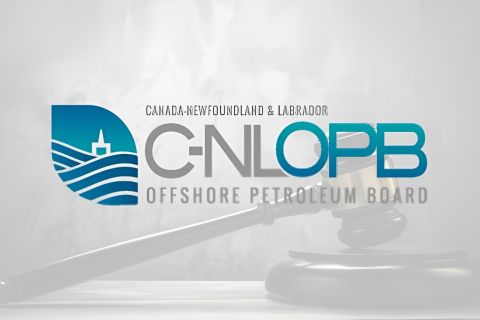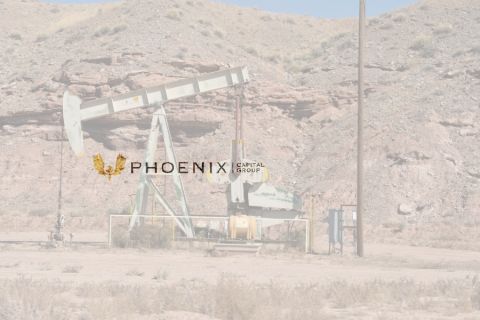
RNG is formed when contaminants such as CO2, water and hydrogen sulfide are removed from methane. The removal elevates the gas into pipeline quality, enabling it to be blended into existing natural gas distribution systems and used in the same way as fossil gas. (Source: Shutterstock)
When Virginia-based utility and energy producer Dominion Energy sets out to develop a renewable natural gas (RNG) project, it aims for scale—as in herd counts.
The waste generated from between 150,000 pigs and 200,000 pigs can produce ample volumes of methane-packing manure at swine farms, according to Ryan Childress, general manager of new business and customer solutions for Dominion. One hog space produces about 1 dekatherm—equivalent to about 1,000 cu. ft of natural gas—per year.

Dairy farm animals, specifically cows, produce even more: about 16 dekatherms to 20 dekatherms per animal, Childress said during the Hart Energy America’s Natural Gas conference. Ideally, the anchor farm has about 10,000 animals, with options to expand.
RNG plant sizes, he added, are typically capable of generating about 200,000 dekatherms to 250,000 dekatherms (about 200 MMcf to 250 MMcf).
“It’s very small volumetrically, but it’s got a really nice carbon benefit,” Childress said. “It’s got carbon leverage, and low CI [carbon intensity] gas has about the highest leverage you can get.”
Dominion Energy is among many companies that have made RNG part of their net-zero emissions strategy as the world races to slow global warming while meeting energy needs. RNG owes its attractiveness to its low-carbon profile and decarbonization abilities.
Methane gas produced by decomposing manure and food waste is captured at solid waste landfills, livestock farms, wastewater treatment plants or other waste facilities. RNG is formed when contaminants such as CO2, water and hydrogen sulfide are removed from methane. The removal elevates the gas into pipeline quality, enabling it to be blended into existing natural gas distribution systems and used in the same way as fossil gas.
“RNG is a great tool. It’s available now. It’s not high tech. It’s not hard to do,” Childress said. “So, it’ basically providing us with another area [way] to get towards net zero.”
Small, but growing
Though RNG represents less than 1% of the North American natural gas market, the RNG segment grew 20% in 2022 by adding 60 MMcf/d of new production capacity and 66 future projects, according to Wood Mackenzie. In July 2023, the firm said the North American market size was 385 MMcf/d, dominated by projects with landfill gas as feedstock.
In its second-quarter 2023 earnings report, Dominion said six of its projects are producing negative-carbon RNG and 18 more projects are in various stages of construction. The company has committed $2 billion through 2035 to produce carbon-negative RNG.
“Most every company, whether it’s an industrial, pharmaceutical, energy company or utilities like us have some sort of net-zero goals. And so, this is a great way” to help accomplish that, Childress said. “It’s a drop-in fuel. There’s no magic to make it. It’s there. You just have to upgrade it. It’s ready. … It’s a premium product, obviously because of the carbon footprint.”
RNG can prove beneficial for farmers as well. It not only reduces the amount of methane released into the atmosphere from farms, it also adds a new revenue stream for farmers.
“You’re paying them for the amount of manure they bring that gives you your feedstock. So, it’s really positive for the farmer,” Childress added.
Incentivizing growth
Growth has been jumpstarted as government incentives, including those in the Inflation Reduction Act (IRA), improve project economics with tax credits.
Plus, when used to create sustainable aviation fuel or hydrogen, RNG can enable producers to capture the full value of production tax credits.
“You’re playing the carbon market and for smaller volumes, getting more credits,” Childress said.
Looking at RNG alone, Childress said the IRA contains lots of new credits, though the industry awaits further guidance on some.
Available incentives include an investment tax credit—similar to ones available for solar and wind projects—for qualified gas projects. The base credit is essentially 30%, he said, but that could rise to 50% if certain requirements regarding domestic content and development in certain communities are met.
“The other thing about the IRA is those tax credits are fungible. You can transfer them. That hadn’t been the case before,” Childress explained. “You had to find someone to do a tax equity deal and trade those, but now you can actually sell for cash. They’ll likely sell a discount just like you do as a tax equity deal. So that’s making the economics pretty interesting.”
Those credits are in addition to benefits that come with participation in the Federal Renewable Fuel Standard program. As part of the program, producers can generate a cellulosic biofuel renewable identification number (D3 RIN), adding to the molecule’s value as companies look to meet renewable volume obligations.
Wood Mackenzie forecasts daily production of RNG to rise to 4 Bcf by 2050, accounting for 4% of the North American natural gas market.
Recommended Reading
Marketed: Wylease AFE Asset Packages in Johnson County, Wyoming
2024-04-29 - Wylease LLC has retained EnergyNet for the sale of three Niobrara Shale AFE (authorization for expenditure) packages in Johnson County, Wyoming.
C-NLOPB Issues Call for Bids in Eastern Newfoundland
2024-04-29 - Winners of the Call for Bids No. NL24-CFB01 will be selected based on the highest total of money the bidder commits to spend on exploration of a parcel during the first six years of a nine-year license.
Tivoli Midstream Buys Southeast Texas Coast Infrastructure
2024-04-29 - Tivoli Midstream acquired the Chocolate Bayou from Ascend Performance Materials, including storage and land for development.
Phoenix Capital Group Acquires Uinta Basin Royalty Interests
2024-04-29 - Phoenix Capital Group’s acquisition of 1,500 net royalty acres in Duchesne County, Utah, brings the company's investment in the Uinta Basin to more than $60 million, the company said.
SCF Acquires Flowchem, Val-Tex and Sealweld
2024-03-04 - Flowchem, Val-Tex and Sealweld were formerly part of Entegris Inc.





